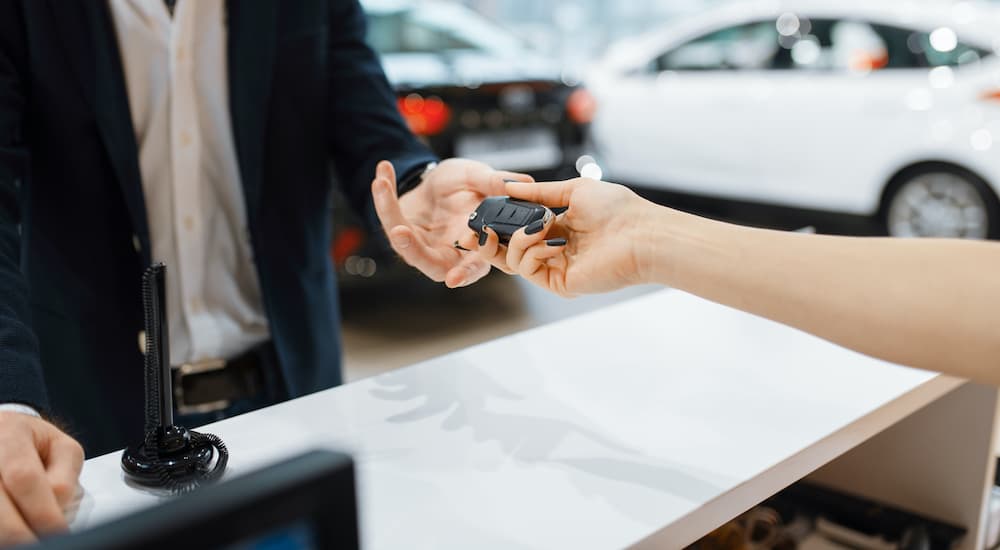Who doesn’t love saving money? One of the smartest investments you can make when it’s time to purchase a car is to buy used. Sure, that new car smell is dizzying, and features like in-seat massaging, a heated steering wheel, and head-up display are undeniably innovative and luxurious. But are they truly worth stretching your bank account to its limit? When you visit your local dealerships, do yourself a favor and walk through the used inventory because after reading through these tips and things to consider, you’ll look at those used models with an entirely new perspective.
From the Mouths of Experts
Whether you’re struggling to rebuild your credit, saving for a rainy day, building your emergency fund, or paying off years of debt, there are many reasons you might be interested in buying a used vehicle to save money. Financial expert Dave Ramsey is renowned for his financial acumen and has built his reputation by helping people save money and get out of debt. So, what does he think about the new vs. used car debate?
Ramsey teaches that the best way to save money when it’s time to purchase a car is to actually save the money and then pay cash for a reliable used car. His advice, however, doesn’t stop there. Instead of rushing out to buy the newest model, he recommends that you wait until your net worth is over $1 million before you ever purchase a new car. To prove his point, he had his team ask a group of millionaires about their daily vehicles. “We found that the average millionaire drives a four-year-old car with 41,000 miles on it,” the team reported. “And eight out of 10 millionaire car buyers drive it away debt-free without a car payment.”
Buy Smart, Buy Used
While it’s easy for a millionaire to walk into a car dealership and pay cash for a vehicle, there is something to be said about Ramsey’s findings. Millionaires are driving older-model cars with more mileage rather than getting behind the wheel of the newest, fanciest models. Why is this the case when they can obviously afford those massaging seats and every other bell and whistle?
Steering Clear of Rapid Depreciation
A new car starts losing its value within a minute of being driven off the lot. Yes, you read that right – a minute. Ramsey’s team reports that a new car loses anywhere between 9% and 11% of its value within one minute, 20% or more after one year, 60% after five years, and 10% every year forward. This depreciation is huge, especially when you consider the average price of a new car is anywhere between $28,000 to $35,000. Go ahead, do the math.
By buying a used car, you can avoid this rapid decline in value and, instead, let the first owner take the largest hit on depreciation. By the time you purchase the vehicle, it’s still in like-new condition but has already experienced its steep decline in value after the first year or the first few years. In turn, you get a great vehicle with many of the same perks offered on newer models but without the high price tag and that painful loss in value as you drive off the lot.
Paying Less
When you buy a used car, you’re not only saving money on the sticker price, but you’re also saving money for the long-term. While many argue that used cars are more likely to need repairs, this isn’t typically the case, thanks to advances in the automotive industry that have made it possible for cars to log thousands of miles with ease. Resources like CarFax have also changed the industry by giving drivers peace of mind by delivering detailed reports of a car’s owner, maintenance, and repair history. So, between advances in the industry and reports from CarFax, you’ll likely know what you’re getting long before you ever sign on the dotted line.
How else will you save money by buying a used car? Insurance companies reward drivers who purchase used cars with lower rates. Since insurance rates are determined by the value of the car, used cars are cheaper to insure and cover if, for instance, they are totaled in a wreck. New cars are usually more expensive to replace or repair (thanks to all those bells and whistles), which is why insurance companies charge higher rates.
More Bang for Your Buck
Between avoiding depreciation and reaping the benefits of lower insurance rates, buying a used vehicle sounds pretty good right about now, doesn’t it? It only gets better from here! Since most of us aren’t millionaires, we can’t afford to walk into a dealership and pay for the vehicle of our dreams. It simply isn’t practical or feasible, and that’s perfectly fine. But what if there was another option?
When buying a new car, practicality often forces us to settle for the vehicle we can afford and not the vehicle that we necessarily want or that best meets our needs. This changes when you start shopping for a used car because used models deliver more bang for your buck. While you may not be able to afford a brand new SUV in the highest trim available, you can likely afford a model that’s just a few years older or a similar SUV from another manufacturer that offers more features than you ever imagined. When you shop for a used vehicle, you’re shopping smart and getting the most out of your money.
Things to Consider
When you’re looking for a reliable used vehicle that will serve you well and help you keep more money in the bank, it’s important to shop smart and take advantage of all the perks your local dealership offers on its used inventory. For example, most used dealerships provide the CarFax report for their used vehicles. This is a great place to start and allows you to learn more about the vehicle’s history, from the number of owners to any major repairs, accidents, etc.
Beyond checking the vehicle’s CarFax, it’s also important to carefully inspect the exterior and interior for any major damages or defects. While signs of wear and tear are to be expected on a used vehicle, be sure to note anything major, like mismatched paint or overspray, that might suggest a major repair. Once you’ve inspected the vehicle, be sure to take it for a test drive. The experts at Investopedia report that 20% of consumers opt not to test drive a used car and, as a result, often experience buyer’s remorse. By test driving the vehicle, you’re not only ensuring it handles well, but you’re also looking for signs of engine trouble like dashboard warning lights in addition to getting a chance to test other features like the radio and air conditioning.
Once you’ve decided the vehicle is a solid purchase, it’s time to dig in and do your research. Confirm that the vehicle’s VIN number matches its title and look for any associated recalls on the National Highway Traffic Safety Administration website. You can also reach out to your insurance provider for an estimate of coverage and use resources like Kelley Blue Book to determine a fair purchase price. From there, it’s all about negotiating the price and finalizing the deal.






